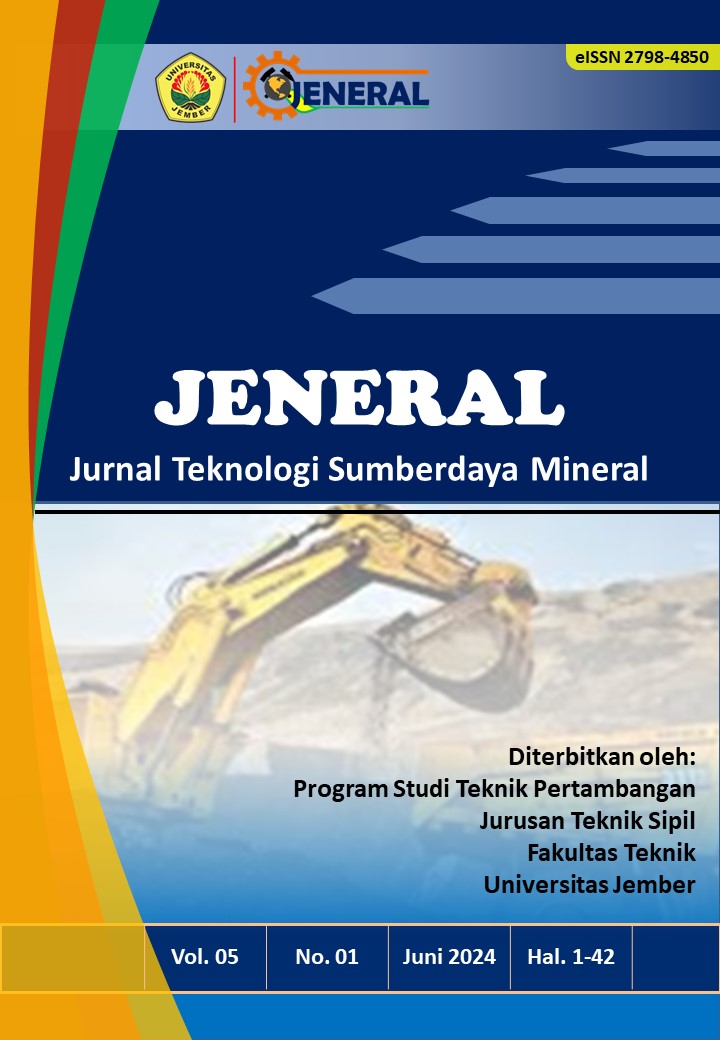Optimalisasi Pengendalian Rasio ICP Boat dengan Limbah Brick Ladle Converter Matte (Al2O3-SiO2) Menggunakan Simulasi Factsage
DOI:
https://doi.org/10.19184/jeneral.v5i1.45489Keywords:
Converter, ladle, brick, ICP boat,, FactSageAbstract
The purification process to increase the nickel content is carried out in a Pierce Smith converter through several stages, including charging, blowing, skimming, dry up, and casting, resulting in a nickel matte with a 75-78% nickel content. After casting, the nickel matte is stored in ladles, with each converter being able to accommodate the casting of 7 ladles, each with a capacity of about 15.5 tons. These ladles are made of carbon steel with a brick lining, consisting of castables on the walls and alumina brick on the bottom. Repeated pouring of matte into the ladles can cause surface erosion due to high heat input and matte friction, as well as chemical issues such as build-up. The refractory material in these ladles will undergo a total relining scheme, resulting in waste brick classified as B3 waste. The potential of the waste brick in the ladles is still quite high in producing residual nickel matte in a homogenized form. Therefore, the waste brick from the ladles will be considered to be mixed with ICP Boat with specific composition and distribution. The resulting mixture will be used as feed in the converter purification process by reviewing the variation of the waste brick to ICP Boat ratio using FactSage software simulation and validating the results through field experiments. FactSage software simulation recommends an improvement in the waste brick to ICP Boat mixture ratio of about 4.6-12% at a temperature of 1200°C to prevent the formation of spinel and olivine
Keywords: Converter, ladle, brick, ICP boat, FactSage
Downloads
References
Crites. M.D, et al. 2000. Interaction of Chrome-free Refractories with Copper Smelting and Converting Slags. Canadian metallurgical quarterly, vol (39) no.2: 129-134
Gregurek, D., Schmidl, J., & Spanring, A. (2021). Refractory Challenges in Nickel and Cobalt Processing Furnaces. In Ni-Co 2021: The 5th International Symposium on Nickel and Cobalt (pp. 251-258). Springer International Publishing.
L.A. Diaz. (2007). Effect of spinel content on slag attack resistance of high alumina refractory castables. Journal of the ceramic Society (4623-4631)
Pérez, I., Moreno-Ventas, I., & RÃos, G. (2018). Thermochemical calculations supported the post-mortem study of magnesia-chromite refractory used in Peirce-Smith Converter for copper-making process. Ceramics International, 44(12), 13476-13486.
Scacht. C. A. (2004). Refractories Handbook. Marcell Dekker Inc: Pensylvania. USA












